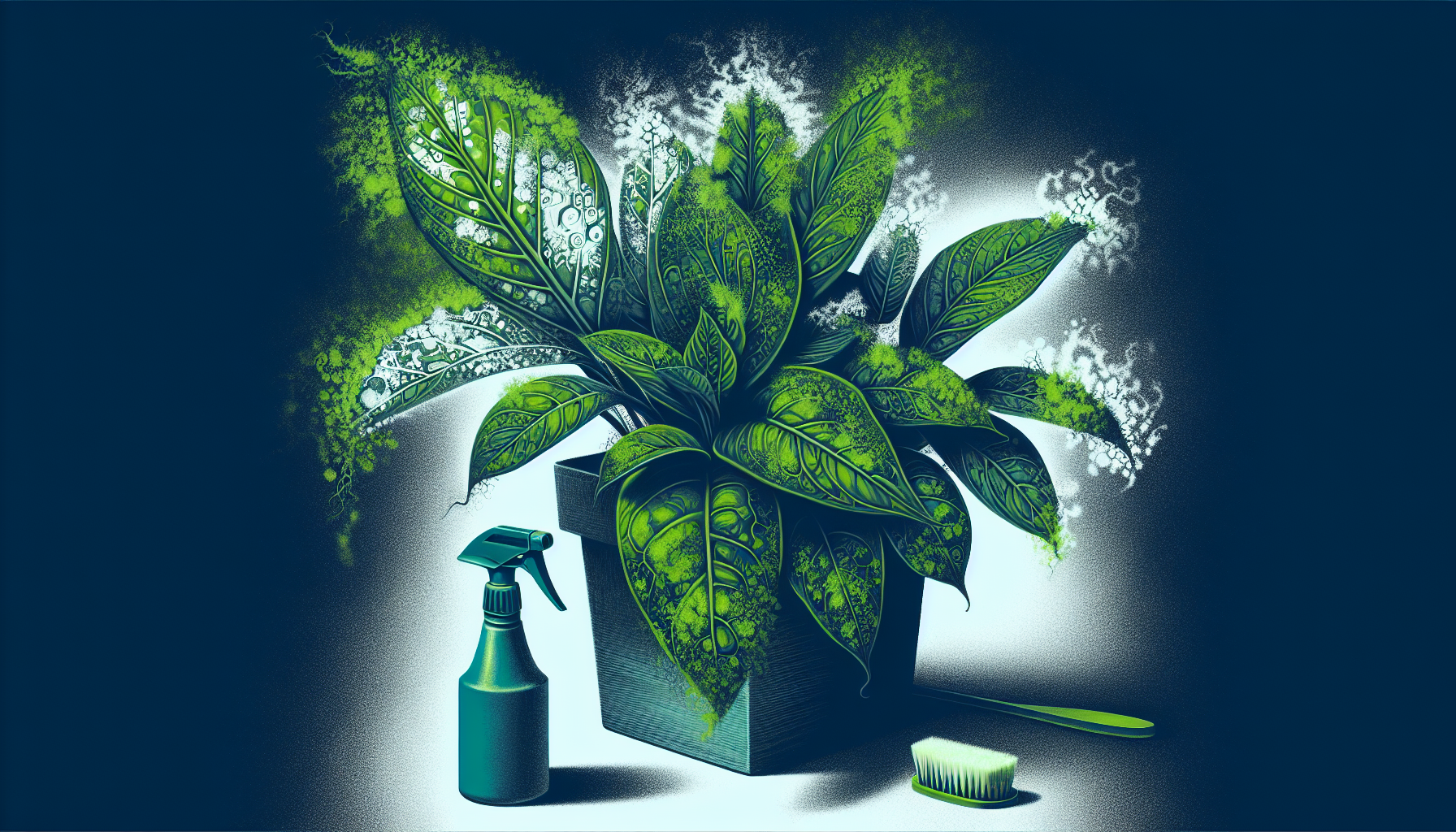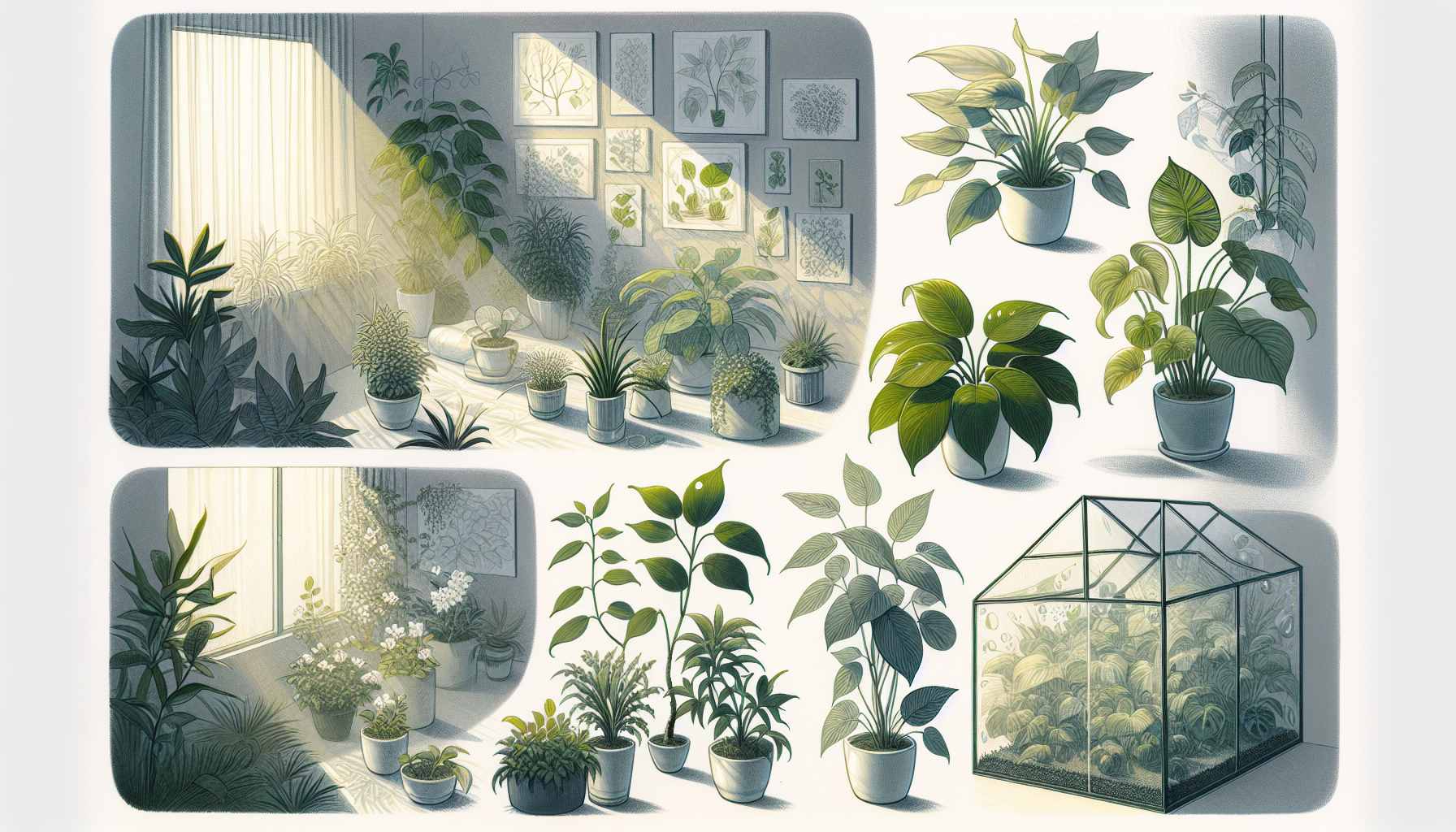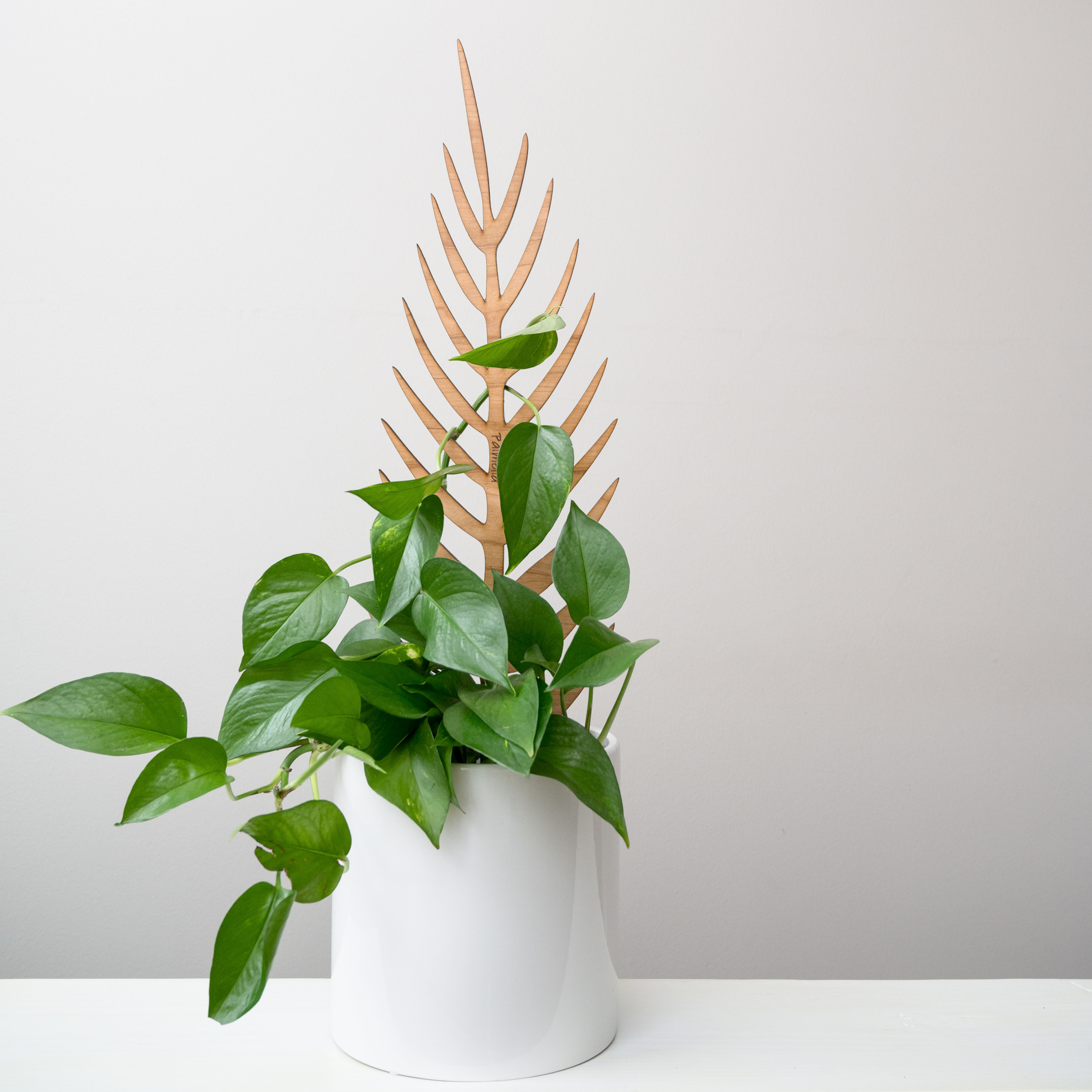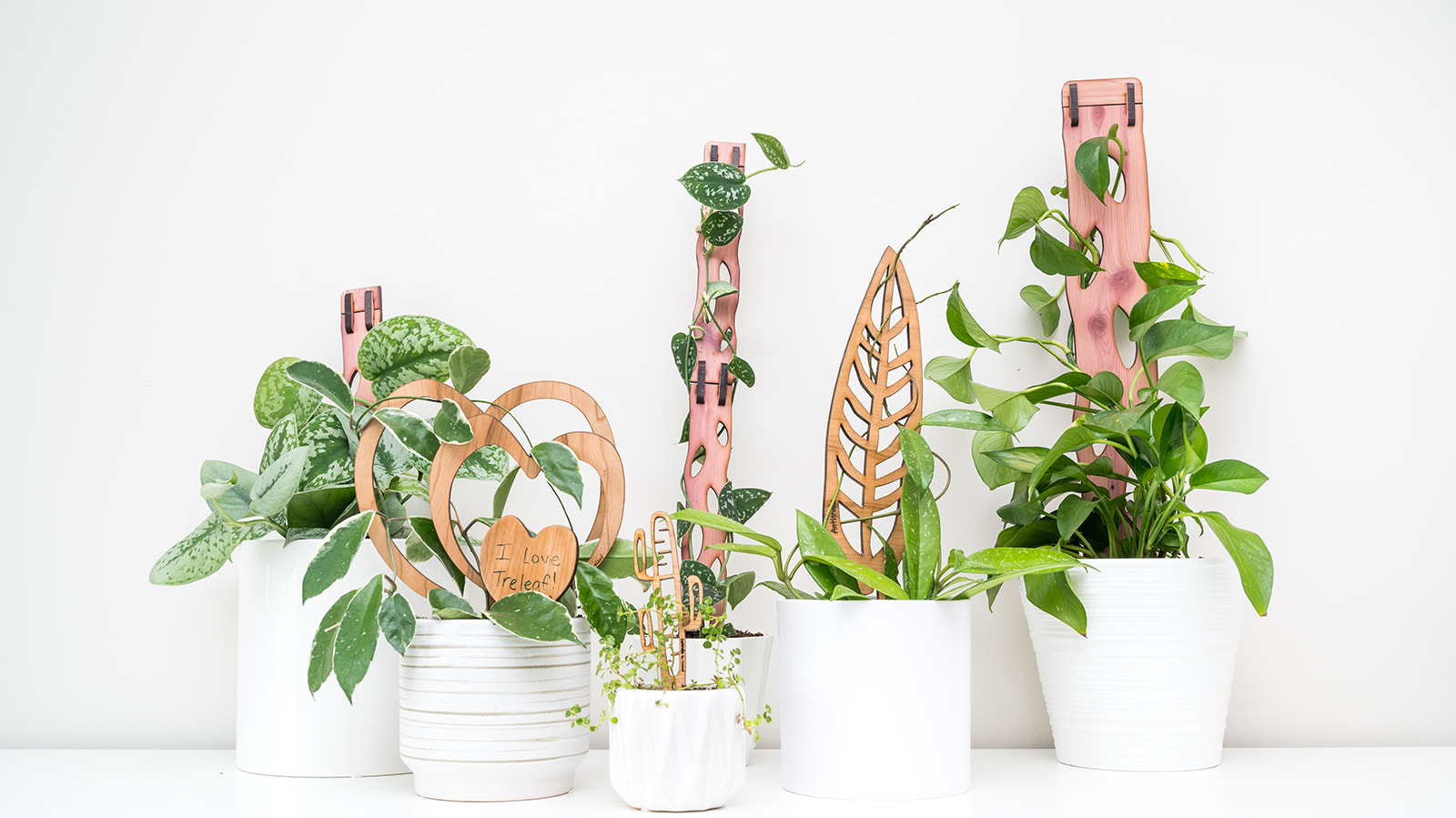Banish White Spots on Indoor Plants: Effective Solutions for a Healthy Home Garden
Are the white spots on indoor plants leaving you baffled? Quick identification and treatment are crucial. Our comprehensive guide demystifies these unsightly spots and delivers practical remedies to safeguard the health of your indoor garden. Read on for clear insights and actionable tips.
Key Takeaways
-
White spots on plants can indicate a range of issues from fungal infections like powdery mildew to mineral buildup due to hard water, or even sun scorch caused by excessive direct sunlight.
-
Common pests like mealybugs and spider mites are notorious for leaving white marks and webs, and can be controlled with measures like rubbing alcohol for mealybugs and neem oil for spider mites.
-
Environmental control is key to preventing white spots on plants, involving optimizing humidity, airflow, and light conditions, alongside exploring natural remedies before resorting to chemical treatments.
Unveiling the Mystery: Understanding White Spots on Indoor Plant Leaves

White spots decorating your indoor plants’ foliage can be more than just a cosmetic issue; they’re often a cry for help, signaling various potential problems ranging from fungal infections to nutrient deficiencies. These cryptic messages from your plants need decoding, and understanding the location and pattern of these spots can give us vital clues about the underlying cause.
It’s not a matter of simply wiping away the spots; an accurate diagnosis is critical to provide the right treatment. For instance, if those older leaves at the bottom are spot-free, but the new growth is dotted with white, you can likely rule out nutrient deficiencies as the culprit.
Powdery Mildew - The Fungal Culprit
Powdery mildew is that uninvited guest that leaves a white, floury mess on the surfaces of your plant leaves. This fiendish fungus sneakily appears as tiny white spots or a film, coating the tops of leaves, stems, and sometimes even the flowers. It’s not picky either, targeting a smorgasbord of plants including your Begonias, Philodendrons, and Monsteras.
The perfect storm for powdery mildew consists of warm, dry days followed by cool, humid nights—the kind of conditions that make this fungus thrive and multiply.
Mineral Marks from Hard Water
If you’ve ever spotted white, chalky deposits on your plant leaves, you might be dealing with the fallout from hard water or overzealous fertilizing. These white spots are mineral buildups, a common byproduct of watering with tap water that’s high in minerals like calcium and magnesium.
The solution isn’t a tough nut to crack; switching to filtered water and following proper fertilizer guidelines can nip this problem in the bud.
Sun Scorch and Its Telltale Signs
Basking in the sun is great for your plants, right? Not always. Just like us, plants can get sunburned too, especially when they’re not used to the spotlight. This condition, known as sun scorch, manifests as bleached, white, or pale areas on leaves that have been overexposed to direct sunlight.
To safeguard your green friends, here are some tips:
-
Introduce them gradually to brighter environments
-
Use shades to filter the harsh rays
-
Watch out for white marks on the side of the leaf facing the sun, as they are the first signs of distress.
Identifying Common Pests That Leave White Marks

Moving on from fungal fiends to creepy crawlers, let’s talk about those common pests known for graffitiing white marks all over your indoor plants. Mealybugs and spider mites are the usual suspects, leaving behind their telltale cottony clusters and silken webs. These tiny vandals can swiftly turn your plant paradise into a scene of horticultural havoc, so quick identification and action are key to keeping infestations under control.
Mealy Bugs and Their Cottony Clusters
Mealybugs, with their white, fuzzy exteriors, might look somewhat endearing, but don’t be fooled—they’re ruthless plant-suckers. These pests leave behind cottony masses as they feed, often found huddled at stem tips or leaf junctures. Spotting a small gathering of them? A q-tip soaked in rubbing alcohol can be your first line of defense, delivering a targeted attack right at the source.
But if they’ve taken a liking to the roots, evidenced by affected leaves with yellowed color and a lack of blooms, the situation calls for a more thorough approach, especially with delicate plants like African violets.
Spider Mites' Tiny Webs and Damage
Spider mites are the ninjas of the pest world, often going unnoticed until their handiwork—a network of fine webs—reveals their presence. These tiny terrors can leave your plants looking yellowed and spotty, a result of their voracious feeding.
But fear not, for neem oil, that organic insecticide hero, stands ready to defend your afflicted plants. A concoction of neem mixed with water, applied every few days, will send these critters packing.
Treating Fungal and Bacterial Infections on Indoor Plants

When white spots turn out to be the handiwork of fungal or bacterial villains, reaching for the fungicide arsenal is often the most effective counterattack for fungal foes like powdery mildew. But before you wage chemical warfare, consider this: a simple homemade potion of baking soda and liquid soap mixed with water can do wonders for mild cases.
Bacterial infections, on the other hand, can be trickier; they’ll show up as small, light-colored spots with a yellow halo, and they can get nasty, leading to wilting or a water-soaked appearance. To keep these infections and bacterial infection at bay, it’s crucial to minimize leaf wetness by watering at the base, thus denying these pathogens the moist environments they adore.
Battling Fungus Among Us
The fight against fungal infections isn’t lost when you’ve spotted the first moldy invaders. Here are some steps you can take to combat mildew:
-
Swift removal of any infected plant parts is your first order of business.
-
Space out your plants to let the air flow freely, making it harder for the mildew to spread.
-
If you prefer a gentler approach, a baking soda mixture might be your ally.
-
Other concoctions like diluted milk spray or a mouthwash blend can also help you get rid of that white mold.
And if these stubborn fungi refuse to retreat, it may be time to bring out the big guns—specific fungicides designed to protect your houseplants from fungal disease. Remember, cool, damp, and crowded conditions are a playground for fungal growth and fungal infection like downy mildew, so keep those leaves dry and give your plants some breathing room.
Addressing Bacterial Invasions
Bacterial infections are the stealthy saboteurs of the plant world, often causing damage before you even realize they’ve infiltrated your green space. To fend off these attacks, keeping humidity in check and promoting airflow will do wonders. If you do spot infected leaves, show no mercy—remove and destroy them to prevent the infection from spreading.
And while you can’t cure systemically infected plants, you can prevent future outbreaks by starting with disease-free seeds and plants. Copper-based sprays and biofungicides packed with beneficial microbes can also fortify your plants against these bacterial bullies.
Environmental Adjustments to Prevent White Spots

Our indoor jungles are more than just decor; they’re delicate ecosystems that thrive under the right conditions. White spots can often be headed off at the pass by simply tweaking the environment to make it less hospitable to the culprits behind these blemishes.
Keeping the air drier and the temperature cozy, between 65 to 85 degrees Fahrenheit, sets the stage for a spot-free plant life. And let’s not forget the importance of air circulation; a gentle breeze can make all the difference in keeping your foliage healthy and free from fungal freeloaders.
Optimizing Humidity and Air Flow
Creating the perfect humidity haven for your houseplants may seem daunting, but it can be as simple as:
-
Grouping your plants together
-
Using a pebble tray to boost moisture levels
-
Using a humidifier, especially during the winter months when the air gets dry
-
Considering the natural habitat of your plants; tropical species will thank you for the extra mist, while succulents prefer to keep it arid.
But humidity without poor air circulation is a recipe for disaster, so keep the air moving to ward off unwanted moisture buildup.
Giving your plant the right kind of support can also help with helping keep the air circulation consistent around plant leaves. If you have a a well supported plant, you can help keep air flowing around all the leaves.

Imagine of a Pothos plant climbing Palmella wooden trellis by Treleaf
Adapting Light Conditions
Light can be a tricky beast to tame, but it’s essential for the well-being of your indoor plants. Sun scorch can be easily prevented by easing your plants into brighter conditions, starting with just a couple of hours a day. It’s all about finding that Goldilocks zone of light—not too much, not too little—to keep those white spots at bay.
Also adding a trellis or plant support to the your plants can help expose all the leaves to the light source and help a little bit with lighting.

An imagine of an assortment of plants on different wooden support trellises by Treleaf
Natural Remedies and Chemical Treatments

Creative illustration of natural remedies and chemical treatments for indoor plants
When the white spots on your plant leaves are stubborn, you might be tempted to reach for the heavy chemicals. But before you do, consider the gentler path of natural remedies. These less aggressive options can be just as effective and are often safer for your indoor oasis.
Of course, when dealing with particularly obstinate issues, chemical treatments can be the saviors of the day, as long as they’re used with a careful hand and a mindful eye.
DIY Solutions for Gentle Care
For those who prefer a do-it-yourself approach, myriad concoctions await to assist in the gentle treatment of your green companions. A squirt of liquid soap mixed with water can work wonders on early pest intruders, and for those early signs of fungal invasion, a dash of baking soda or a splash of vinegar might just do the trick.
These homemade remedies, paired with routine plant cleaning and inspections, can catch problems before they escalate, keeping your many plants, including mist plants and other plants, in tip-top shape.
When to Resort to Chemical Interventions
Sometimes, despite our best efforts, the natural approach isn’t enough to treat powdery mildew. When powdery mildew proves too formidable, systemic fungicides come to the rescue, working from within the plant to banish the fungal fiend. But timing is everything—avoid using these potent potions during the plant’s delicate flowering stage or under the harsh midday sun.
As long as you follow the instructions to the letter and consider the life stage of your plant, these chemical defenders can safely restore health to your indoor garden.
Ongoing Maintenance Tips for Healthy Plants
A stitch in time saves nine, and the same goes for plant care. Regular maintenance is the cornerstone of a healthy indoor garden, preventing many issues, including those pesky white spots, before they begin. Sticking to a schedule for watering, fertilizing, and pruning is what keeps your greenery growing strong. And don’t forget to refresh the soil every year or so to replenish those vital nutrients.
Consistent Watering Without Overdoing It
Watering might seem straightforward, but there’s an art to it. Checking the soil’s moisture level before giving your plants a drink can prevent overwatering, which is just as harmful as under-watering. Each plant species has its own hydration needs, so getting to know them is key to their success.
Regular, appropriate watering will keep your plants from drying out or drowning, ensuring they stay healthy and spot-free.
Regular Plant Inspections
Just like any good guardian, keeping a watchful eye on your plants is vital. A weekly checkup can reveal early signs of stress or infestation, giving you the upper hand in keeping your plants robust. Look for changes in leaf texture, unexpected spots, or slow growth—these are the first hints that your plants may need some extra TLC.
Summary
As we reach the end of our green-thumbed journey, it’s clear that white spots on indoor plants can stem from a variety of causes, each requiring a unique approach. From the fungal challenges of powdery mildew to the mineral deposits left by hard water, and the damage caused by pests like mealybugs and spider mites, we now understand that maintaining plant health is a multifaceted endeavor. Armed with this knowledge, we can create the ideal environment for our leafy companions, employ natural remedies or chemical treatments as necessary, and establish regular maintenance routines to foster a verdant, healthy home garden. Let this be your guide to banishing white spots and cultivating a thriving indoor oasis that brings joy and life to your space.
Frequently Asked Questions
What are the most common causes of white spots on my indoor plants?
White spots on indoor plants can be caused by fungal infections, mineral deposits, sun exposure, and pests like mealybugs and spider mites. Keep a lookout for these common causes to address the issue effectively.
Can I use household items to treat powdery mildew?
Yes, you can use household items like baking soda, liquid soap, water, milk spray, or a vinegar-based mixture to treat powdery mildew. Give them a try and see which one works best for you!
How can I prevent white spots caused by environmental factors?
To prevent white spots, make sure to control humidity and air flow, gradually expose plants to brighter light, and water them properly without overdoing it. These steps can help minimize environmental factors causing white spots.
Are chemical treatments necessary to get rid of white spots on my plants?
Chemical treatments may be necessary if natural remedies do not work, especially for severe cases of white spots on plants. Always consider using systemic fungicides and insecticides if the problem persists.
What regular maintenance should I perform on my indoor plants to keep them healthy?
To keep your indoor plants healthy, you should water them based on their individual needs, refresh the soil nutrients every 12 to 18 months, and inspect them weekly for any signs of stress or disease. Regular maintenance is key to happy, thriving indoor plants!
